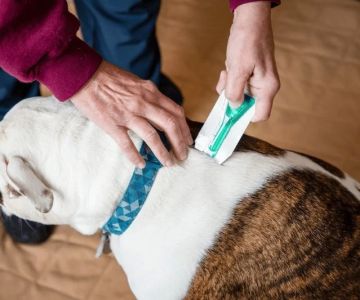Making the Transition: Tips for Introducing Your Pet to a New Vet
As a pet parent, introducing your beloved companion to a new vet can be a stressful experience—for both you and your pet. Whether you're moving to a new area, or perhaps you’ve chosen a new vet for other reasons, this change can be daunting. It's natural to worry about how your pet will react and whether they’ll feel at ease with the new vet. However, with the right approach, you can ensure that your pet’s first visit to a new veterinary office is as smooth and stress-free as possible. I’m here to share some tried-and-true tips that helped me successfully introduce my pet to a new vet, and I believe these will help you too!
1. Start with a Calm and Positive Introduction
The first impression matters a lot when it comes to your pet’s relationship with their new vet. Before you even step into the clinic, prepare your pet. Make sure your pet is familiar with their carrier or leash and that they’ve had some time to adjust to the idea of going out. This is crucial in helping them feel safe and less anxious. When you first arrive, try to keep your demeanor calm and positive. Animals are incredibly intuitive, and they pick up on our emotions. If you stay relaxed, your pet will likely feel more at ease as well.
Remember that some pets may not be as comfortable in new places. For example, my dog, Buddy, is usually calm but became incredibly anxious during his first visit to a new vet clinic. I found that talking to him softly and keeping him close to me helped him feel more secure. It’s a great way to create an initial calm energy for your pet.
2. Give the Vet Office a Heads-Up About Your Pet’s Anxiety
Don’t hesitate to inform the vet office about any behavioral concerns your pet may have. It’s completely normal for pets to feel stressed in unfamiliar situations, and letting the vet staff know about your pet’s anxieties will allow them to take extra steps to make your pet feel more comfortable. In my case, Buddy is a bit sensitive to being touched by strangers, especially in unfamiliar places. I made sure to mention this to the receptionist and the vet so they could proceed slowly and give him some time to adjust.
Some veterinary offices have calming techniques or even soothing music to play during exams. It’s worth asking about these options if your pet is especially nervous. These small considerations can make all the difference in your pet’s comfort level.
3. Make the First Visit a Simple One
It’s easy to get caught up in thinking that your pet’s first visit to the new vet should involve a full check-up or a treatment plan. However, it’s often better to schedule a simple, non-invasive visit for the first appointment. This allows your pet to become familiar with the new environment without the stress of a more involved procedure.
For Buddy, I opted for a quick “meet and greet” with the vet. We walked around the clinic, and the vet just spent a few minutes talking to us, so Buddy could get used to the surroundings. This helped establish a positive connection between Buddy and the vet, making it easier for him to accept future visits.
4. Bring Your Pet’s Favorite Comfort Items
Bringing familiar items from home can help ease your pet’s anxiety. A favorite blanket, toy, or even a piece of your clothing can offer comfort and familiarity in a new environment. I always bring Buddy’s favorite chew toy with us, and it gives him something to focus on rather than feeling anxious about his surroundings.
If your pet has specific scents or items that help them feel secure, don’t forget to pack them for the trip. Pets often find comfort in their own smell, and this can make them feel more at ease during the visit.
5. Be Patient and Allow Time for Adjustment
It’s important to be patient throughout the entire process. Some pets may take a few visits to warm up to the new vet, and that’s perfectly normal. If your pet shows signs of stress or fear during the visit, don’t rush through the appointment. Take breaks if necessary and allow your pet to acclimate at their own pace.
Buddy, for instance, was initially wary of being examined by the vet. But after a few visits, he started to realize that the vet wasn’t a threat and that the visits weren’t something to fear. This didn’t happen overnight, but by being patient and taking the time to build trust with the vet, Buddy grew more comfortable with the process.
6. Consider Using Calming Aids if Necessary
If your pet has severe anxiety, you might want to discuss calming aids with your vet. There are various products available, such as calming collars, pheromone sprays, or even natural remedies like CBD oil. These can help reduce your pet’s stress levels during a visit to the vet.
In Buddy’s case, we used a pheromone spray before our visits, which had a calming effect on him. It’s always a good idea to consult with your veterinarian to determine the best approach for your pet’s needs.
7. Follow Up and Stay Consistent with Visits
Consistency is key in helping your pet become comfortable with their new vet. After the initial visit, it’s essential to schedule follow-up appointments as needed, whether for check-ups or any health concerns. Regular visits help establish a sense of routine and predictability for your pet, making them feel more at ease during future appointments.
For Buddy, we scheduled a couple of follow-up visits to build on the positive experiences from his first one. With each visit, he became more comfortable, and we formed a great relationship with his new vet. It was wonderful to see Buddy’s anxiety decrease over time as he realized that the vet was a friendly and caring professional.
Introducing your pet to a new vet can be an emotional journey, but with the right strategies in place, it can be a smooth transition for both you and your pet. Every pet is different, so take the time to understand your pet’s needs and be proactive in helping them feel comfortable. Over time, you’ll both grow more confident, and your pet will have a positive association with their new veterinary care team.












